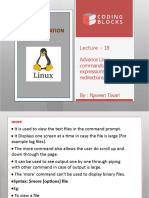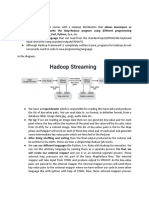0% found this document useful (0 votes)
213 views28 pagesOperating System Lab Report
This document is a lab report for an operating systems experiment on inter-process communication. It discusses two methods of IPC: shared memory and pipes. For shared memory, the student implemented a program with a parent and child process that communicate via a shared memory object, with the child writing a message to the shared memory and the parent reading it. For pipes, the student modified an example program so that the parent process reads output from commands executed by the child process in the pipe.
Uploaded by
ajnobi hueseCopyright
© © All Rights Reserved
We take content rights seriously. If you suspect this is your content, claim it here.
Available Formats
Download as DOCX, PDF, TXT or read online on Scribd
0% found this document useful (0 votes)
213 views28 pagesOperating System Lab Report
This document is a lab report for an operating systems experiment on inter-process communication. It discusses two methods of IPC: shared memory and pipes. For shared memory, the student implemented a program with a parent and child process that communicate via a shared memory object, with the child writing a message to the shared memory and the parent reading it. For pipes, the student modified an example program so that the parent process reads output from commands executed by the child process in the pipe.
Uploaded by
ajnobi hueseCopyright
© © All Rights Reserved
We take content rights seriously. If you suspect this is your content, claim it here.
Available Formats
Download as DOCX, PDF, TXT or read online on Scribd
/ 28

























































































